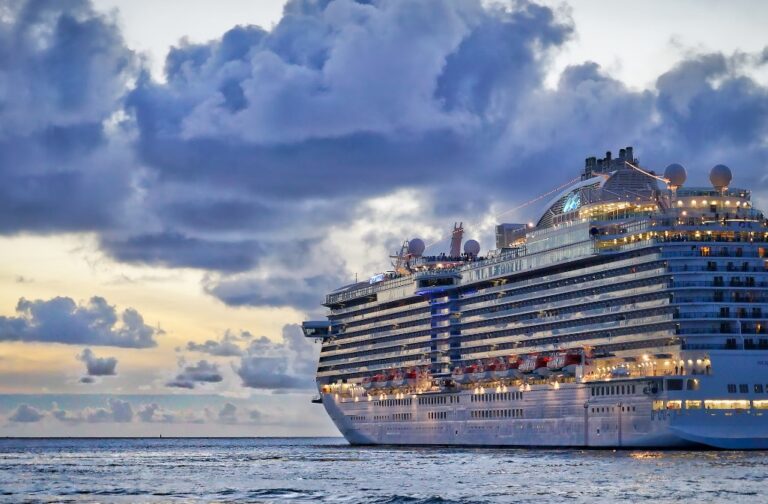A cruise ship is a large passenger vessel designed for recreational travel and leisure voyages. These ships typically provide amenities and facilities such as accommodations, dining options, entertainment venues, pools, spas, fitness centers, shopping, and various activities to create a luxurious and enjoyable experience for passengers during their journey.
Cruise ships are designed to ensure the comfort, safety, and enjoyment of passengers while adhering to environmental regulations and best practices for sustainability. The functioning of a cruise ship involves the coordination and efforts of a diverse team of professionals, including captains, engineers, hospitality staff, entertainers, and medical personnel, to create a memorable cruising experience.
But how polluting is the cruise ship industry?
Table of Contents
The negative effects of pollutions
The following are the main negative effects of pollutions:
1. Environmental pollution
Cruise ships can be major sources of pollution, emitting air pollutants (e.g., sulfur dioxide, nitrogen oxides), generating wastewater, discharging ballast water, and contributing to marine litter. These activities can harm air and water quality, marine life, and ecosystems.
2. Overcrowding and strain on local infrastructure
High volumes of cruise ship passengers can strain local resources and infrastructure in port cities, leading to overcrowding, increased traffic, and pressure on public services.
3. Invasive species spread
The ballast water discharged by cruise ships can introduce invasive species to new regions, disrupting local ecosystems and biodiversity.
4. Health and safety concerns
Cruise ships can be breeding grounds for illness outbreaks due to close living quarters, shared spaces, and high passenger density. Instances of gastrointestinal illnesses like norovirus have been reported on cruise ships.
5. Cultural insensitivity and commodification
The quick turnover of passengers in destinations may lead to shallow interactions with local cultures, resulting in cultural insensitivity or commodification of traditional practices and artifacts.
Read also: Blue Economy: what is it and what are its main components and principles
Mitigating ship cruise pollution
Some ways to mitigate cruise and ship pollution are:
1. Use cleaner fuels
Transitioning to cleaner fuels such as liquefied natural gas (LNG), marine gas oil, or other low-sulfur alternatives can significantly reduce sulfur oxide (SOx) and particulate matter emissions from cruise ship engines.
2. Install exhaust gas cleaning systems (Scrubbers)
Installing exhaust gas scrubbers can help remove pollutants, including sulfur oxides and nitrogen oxides, from the ship’s emissions before they are released into the atmosphere.
3. Adopt energy-efficient technologies
Utilize energy-efficient technologies like LED lighting, advanced HVAC systems, and energy management systems to reduce overall energy consumption and, consequently, greenhouse gas emissions.
4. Optimize ship speed and routing
Cruise ships can optimize their speed and routing to minimize fuel consumption and emissions. Sailing at lower speeds and optimizing routes for fuel efficiency can be environmentally beneficial.
5. Implement waste reduction and recycling programs
Cruise ships can adopt waste reduction initiatives by minimizing single-use plastics, promoting recycling programs for passengers and crew, and responsibly managing solid waste generated on board.
6. Enhance wastewater treatment systems
Invest in advanced wastewater treatment systems to treat sewage and greywater to a higher standard before discharge, minimizing water pollution.
7. Implement ballast water management practices
Comply with ballast water management regulations to prevent the spread of invasive species by properly treating ballast water before discharge.
8. Educate passengers and crew
Raise awareness among passengers and crew about the importance of responsible behavior on board, including proper waste disposal, water conservation, and energy-saving practices.
The way forward
Cruise ship pollution is a concerning environmental issue due to the substantial impact these vessels can have on the air, water, and ecosystems. The pollution generated by cruise ships includes air pollutants, water discharges, solid waste, and noise.
Balancing the benefits of cruise ship tourism with environmental, social, and cultural considerations is essential. Sustainable practices, responsible tourism guidelines, and strict adherence to environmental regulations can help mitigate the negative impacts associated with cruise ship operations.
Efforts to mitigate cruise ship pollution include the adoption of cleaner fuels, exhaust gas cleaning systems, energy-efficient technologies, advanced wastewater treatment, waste reduction initiatives, and adherence to environmental regulations like MARPOL.
Promoting sustainable tourism, educating passengers and crew, supporting research and innovation, and emphasizing compliance and transparency are essential steps towards minimizing the environmental impact of cruise ships.












